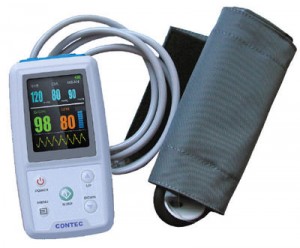What is Ambulatory Blood Pressure Monitoring?
 Ambulatory Blood Pressure Monitoring (ABPM) is a non-invasive method of obtaining blood pressure readings over twenty-four hours, while the patient is in their own environment, representing a true reflection of their blood pressure.
Many studies have now confirmed that blood pressure measured over a 24-hour period is superior to clinic blood pressure in predicting future cardiovascular events and target organ damage.
Ambulatory Blood Pressure Monitoring (ABPM) is a non-invasive method of obtaining blood pressure readings over twenty-four hours, while the patient is in their own environment, representing a true reflection of their blood pressure.
Many studies have now confirmed that blood pressure measured over a 24-hour period is superior to clinic blood pressure in predicting future cardiovascular events and target organ damage.
What does it involve?
Blood pressure is measured over twenty-four hours using auscultatory or oscillometry and requires use of a cuff. The monitor takes blood pressures every 20 minutes (less frequently overnight, e.g. hourly).
What are the uses of Ambulatory Blood Pressure Monitoring?
- The main use is to obtain more reliable blood pressure readings than one-off measurements. Studies have shown that increased blood pressure readings on ABPM are more strongly correlated to end-organ damage than one-off measurements, e.g. left ventricular hypertrophy.
- To detect white coat hypertension.
- It has use in hypertension research, e.g. reviewing 24-hour profile of antihypertensive medication.
- It may have prognostic use – higher readings on ABPM are associated with increased mortality.
- Response to treatment.
- Masked hypertension.
- Autonomic dysfunction.
- Hypotensive symptoms whilst on antihypertensive medications.
- It may be more cost-effective in the long-term.
 Who needs Ambulatory Blood Pressure Monitoring?
Who needs Ambulatory Blood Pressure Monitoring?
- Any patient with persistently raised blood pressure readings or labile blood pressure should be considered for ABPM (whether or not on treatment). However it is not a screening tool.
- Borderline readings in clinic.
- Poorly controlled hypertension, e.g. suspected drug resistance.
- Patients who have developed target organ damage despite control of blood pressure.
- Patients who develop hypertension during pregnancy.
- High-risk patients, e.g. those with diabetes mellitus, those with cerebrovascular disease and renal transplant recipients.
- Suspicion of white coat hypertension – high blood pressure readings in clinic which are normal at home.
- Suspicion of reversed white coat hypertension, i.e. blood pressure readings are normal in clinic but raised in the patient’s own environment.
- Postural hypotension.
- Elderly patients with systolic hypertension.
Dippers and Non-dippers
- Blood pressure will fall at night in normotensive individuals.
- In hypertensive patients the blood pressure may fall excessively at night (>10%), leading to describing patients as ‘dippers’, which is associated with a poor outcome.
- In ‘non-dippers’ the blood pressure remains high, i.e. less than 10% lower than daytime average. This has also been reported to be associated with a poor outcome.






